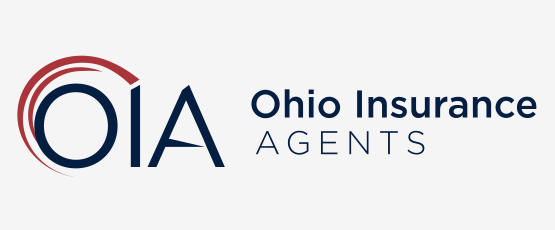
Written by Chris Boggs, Executive Director of the Big “I” Virtual University (VU), originally published by IA Magazine
Business income coverage is a unique form of insurance because the factors used to calculate the amount of protection the insured requires, differ from the factors used to calculate the level of compensation following a loss.
Do you understand the important difference between insurable business income and compensable business income?
Insurable Business Income
Insurable business income is initially a function of the applicable revenues and expenses contemplated in ISO’s business income report/worksheet. The ultimate limit is developed by applying the estimated worst-case period of restoration to the 12-month business income exposure.
12-Month Business Income Exposure
An insured’s 12-month business income exposure is found in J.1. of the CP 15 15 – Business Income Report/Work Sheet. If the insured is a combined manufacturing and non-manufacturing operation, the 12-month business income exposure is line J.2.
The amount is the insured’s gross income—gross sales or gross sales value of production—minus a few specifically listed non-continuing expenses, including:
-
Sales-related expenses: Incurred or potentially incurred following the sale of a product.
-
Prepaid freight – outgoing
-
Returns and allowances
-
Discounts
-
Bad debts
-
Collection expenses
?
-
-
Production-related expenses: Represent the cost of buying or building the products and services being sold to the customer.
-
Cost of goods sold (not calculated according to generally accepted accounting principles)
-
Cost of services purchased from outsiders to be resold that do not continue under contract
-
Power, heat and refrigeration expenses that do not continue, if CP 15 11 is attached
-
Excluded payroll expenses, if CP 15 10 is attached
-
Special deductions for mining operations
-
No other expenses are deducted from the gross income to develop the 12-month business income exposure — which means the insured does not need to know or estimate which expenses will continue, be reduced or disappear after a loss and during the period of restoration.
Worst-Case Period of Restoration
The worst-case period of restoration is a function of the reality of time. How much time will pass before the insured is once again operational following a worst-case loss? At least 10 pre-construction, construction and post-construction activities directly affect the period of restoration:
-
Pre-construction activities
-
Adjusting the direct property loss
-
Drawing and approving building plans
-
Finding and hiring a contractor
-
Applying for building permits and waiting for them to be issued
-
Scheduling and completing site preparation, including clearing the site of damaged or destroyed property
-
Construction and post-construction activities and issues
-
Accounting for the time required to rebuild
-
Accounting for the time required to restock
-
Rehiring and hiring new employees
-
Finding, purchasing and installing replacement machinery and equipment, then making it operational
-
Addressing ordinance or law issues from federal, state or local governments
Developing Insurable Business Income
Once the worst-case period of restoration is calculated in either days or months, that amount of time is divided by either 365 days or 12 months to develop a percentage. The 12-month business income exposure is multiplied by this percentage; the result is the insurable business income.
For example, if the 12-month business income exposure (J.1) is $1 million and the estimated period of restoration is 420 days, the period of restoration percentage would be 420/365 = 1.15. Multiplied by the 12-month business income exposure, that leaves an insurable business income of $1.15 million.
Compensable Business Income
Compensable business income is the actual amount of business income paid to cover the amount of income lost during the period of restoration—the amount necessary to indemnify the insured. Compensable business income is some amount less than the insurable business income because it is based on net profit or loss before tax, plus continuing normal and ongoing operating expenses incurred during the period of restoration.
Unlike insurable business income, the compensable business income calculation deducts operating expenses that do not continue or are reduced following a covered loss. This represents the amount that results after subtracting all reduced or discontinued operating expenses to produce the continuing normal operating expenses.
Business Income Defined
ISO's two business income coverage forms, CP 00 30 and CP 00 32, define business income as follows:
|
Business income means the: a) Net income (net profit or loss before income taxes) that would have been earned or incurred; and b) Continuing normal operating expenses incurred, including payroll. |
Applying this definition and the amount it represents, the insurance carrier agrees to indemnify the insured for its actual loss of business income during the period of restoration. If all coinsurance conditions are met, the only limit on protection is the limit of coverage purchased.
Compensable business income indemnifies the insured by returning it to the same financial condition that existed prior to the loss or, in the case of business income protection, would have existed had no loss occurred. But the amount necessary to indemnify the insured does not equate to the amount of insurance purchased, because the method for calculating the 12-month business income exposure differs from the method for calculating the compensable business income loss.
The 12-Month Business Income Exposure
Remember, only two classes of expenses are considered and deducted when developing the insured's business income exposure:
-
Sales-related expenses: Deducted from gross sales or gross sales value of production to produce the insured's "Total Revenues" (line H of the CP 15 15).
-
Production-related expenses: Subtracted from “Total Revenues,” leaving the 12-month business income exposure (J.1. or J.2.).
Only those expenses are deducted when completing the business income report/worksheet. No other non-continuing or reduced expenses are considered in insurable business income. Because of this, the 12-month insurable business income total will always be higher than the compensable business income amount—except, possibly, when a loss exceeds the contemplated worst-case scenario.
What’s the Difference?
Estimating the difference between the insurable business income exposure (J.1.) and the compensable business income exposure is nearly impossible. Prior to the loss, there’s no way to accurately guess how much of which expenses will continue, be reduced or disappear — and it really doesn't matter.
Recognizing the difference between insurable and compensable business income is important if for no other reason than explaining it to the insured. Disappointment and dissatisfaction are a function of expectation. If the insured expects more than is due, problems arise.
But what can you do to adjust for the difference? Unfortunately, nothing, thanks to the application of the business income form’s coinsurance penalty.
The business income coinsurance penalty is calculated by applying the same deductions used to develop the 12-month business income exposure in the CP 15 15 — only sales-related and production-related expenses. Non-continuing operating expenses are not deducted or considered in the coinsurance condition.
That means lowering the limit of coverage to account for the difference between the insurable and compensable amount does nothing but subject the insured to a coinsurance penalty and possible under-insurance.
But one benefit arises from the difference: a financial safety net. The difference creates the following for the insured:
Limits available to cover 60 days of extended business income protection
Available additional limits should the period of restoration run longer than expected
When developing the business income limit, the insured does not consider or calculate which normal operating expenses will or will not continue. But following a loss, the insurance carrier considers and ultimately deducts from the loss payment all non-continuing normal operating expenses. To do otherwise would violate the principle of indemnification.
Ready to learn more?
Want more details on insurable versus compensable business income and related topics? Don’t miss the Big “I” Virtual University (VU) webinar, Business Income: Are You Sure You Protected ALL the Insurable Income? Taking place next Wednesday, Dec. 20 from 1-3 PM, the session will outline:
-
How to complete the business income worksheet (CP 15 15).
-
The difference between insurable and compensable business income.
-
How to insure the additional loss of income that occurs once the business reopens.
-
How to properly insure the exposure created by dependent properties (contingent business income).






